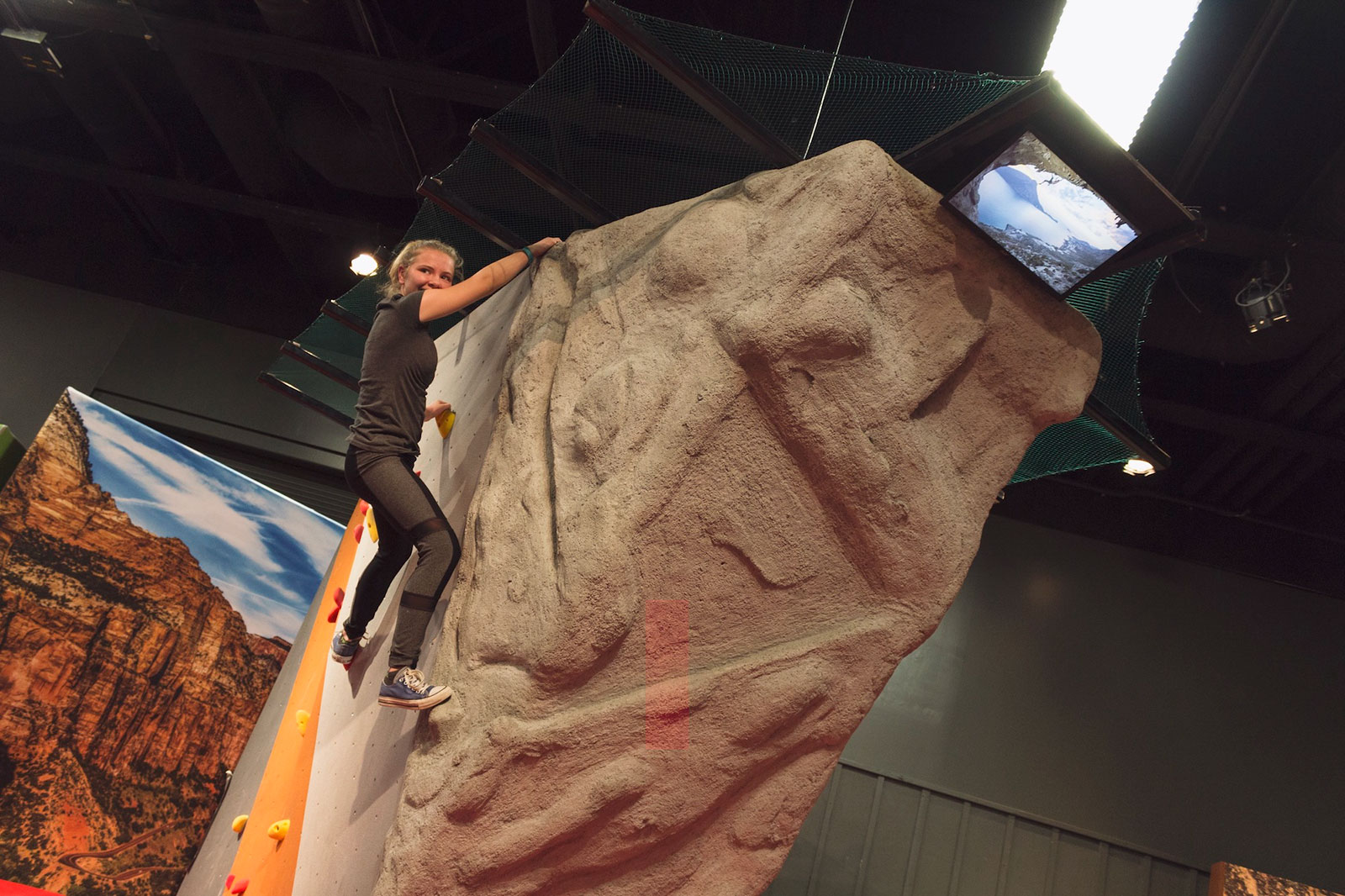The Local newsletter is your free, daily guide to life in Colorado. For locals, by locals.
Elite-level rock and ice climbers, BASE jumpers, free divers, and parkour athletes all have one thing in common—and it’s not that they’re adrenaline junkies.
“You don’t want adrenaline pumping through your veins when you’re participating in these sports because adrenaline induces a fight-or-flight response,” says Garth Spellman, curator of the Denver Museum of Nature & Science’s newest exhibit, Extreme Sports: Beyond Human Limits, which opens Friday, September 13.

The exhibit, created by Canada-based Science North, digs into the science behind a variety of extreme outdoor sports and demonstrates how athletes use gear and skills developed over years to achieve feats that non-athletes might consider crazy. Extreme Sports is the 12th traveling exhibit produced by Science North (its first traveling exhibit was made in 2003 to accompany a Science North documentary about Jane Goodall). This is Extreme Sports’ first appearance in the United States.
The exhibit entrance is a high-lining experience. Visitors can attempt to walk across a slackline over the backdrop of a canyon while a track of nature sounds and what seems to be a barking dog plays overhead. The first station inside the exhibit challenges visitors to match the movements of athletes on screen in a setup similar to the video game Just Dance.
Visitors can also take a sensation-seeking assessment—an eight-question quiz based on the work of Atlanta-based Dr. Ken Carter, a researcher and clinical psychologist who studies extreme sports athletes. The questions measure participants’ susceptibility to boredom, desire to be unrestrained, love of new sensations, and affinity for thrill- and adventure-seeking to land on a final score that works as a rough measure of their openness to or desire for new, bold sensory experiences.
“[Carter’s] research helps to guide a lot of the central themes of the exhibit—and also talking about the fact that sensation seekers and extreme sports athletes are not adrenaline junkies,” says Kirsti Kivinen-Newman, senior scientist at Science North.
Athletes—including 15 from Colorado—are highlighted throughout the exhibit, and their sensation-seeking scores are displayed so visitors can see how their own scores compare. Dr. Omer Mei-Dan, an orthopedic surgeon at the University of Colorado School of Medicine who participates in a slew of outdoor sports, including wingsuit flying and whitewater kayaking, is featured toward the beginning of the exhibit with his sensation-seeking score of 38 out of 40 (for scale, this non-skiing CrossFitter scored 18). Other Colorado athletes include climbers Maureen Beck and Tommy Caldwell, skateboarder David Reyes, and multi-sport athlete Andrew Fraser.
The museum added the Colorado athletes to the exhibit to give it a more local feel and highlight the extreme sports that happen in our own backyard.
The museum also collaborated with Ninja Nation and local American Ninja Warrior athletes to create an obstacle course at the end of the exhibit. After hearing about the differences between adrenaline and dopamine, examining a mannequin for common sports injuries, learning the physics behind wingsuit design, climbing small rock walls, and running and jumping through a mini parkour gym, visitors who are at least 48 inches tall can try to beat Ninja Warriors’ times through the course. The idea, Spellman says, is to see if they can apply the different skills and science they’ve learned in the rest of the exhibit to conquer the course. No adrenaline required.
If you go: Extreme Sports: Beyond Human Limits opens on September 13 and will be at the Denver Museum of Nature & Science until April 12, 2020. The exhibit is free with museum admission or membership. If you want to run the Ninja Nation course, wear appropriate footwear (no sandals, heels, or bare feet; socks are not ideal).








